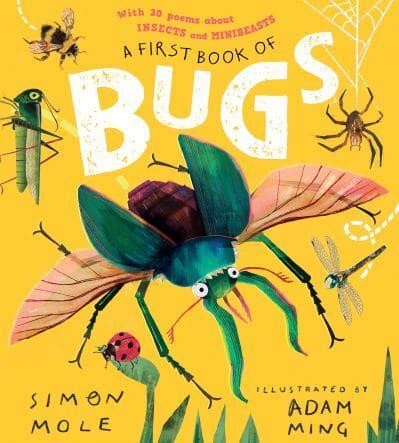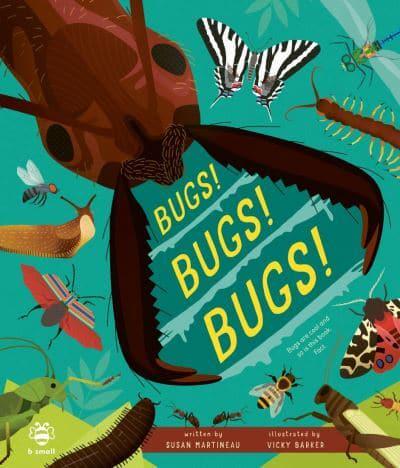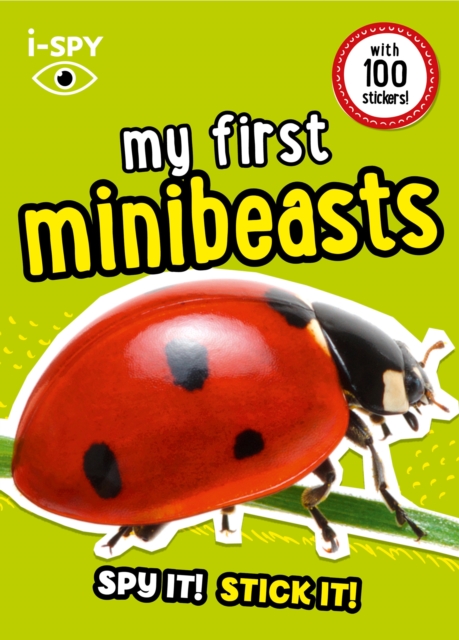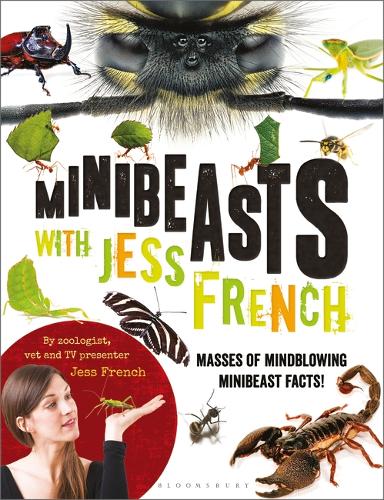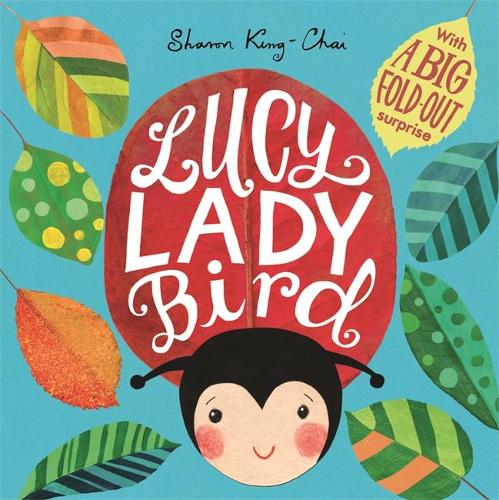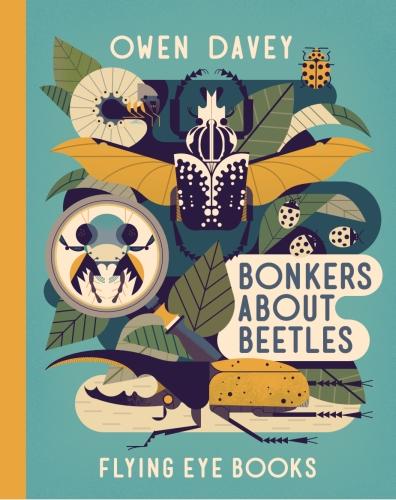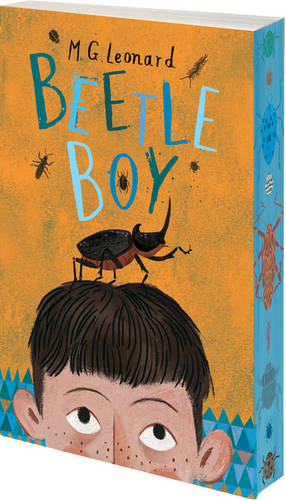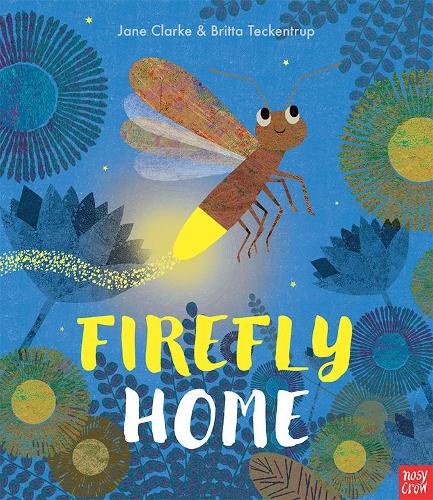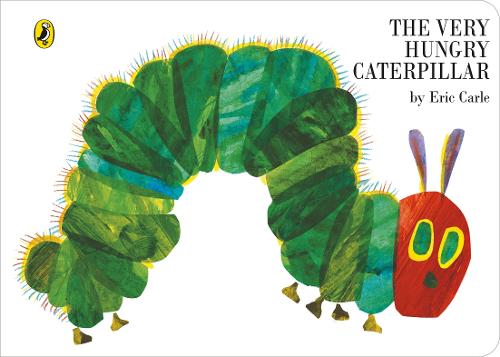
Children’s books about minibeasts
Children’s books about minibeasts. Minibeasts such as insects, spiders, and snails are a source of fascination for children. With over 25,000 types of invertebrates in the UK, creepy crawlies can be found under logs, in ponds, and even inside schools. They have diverse diets, from plants to other minibeasts, and play a crucial role in our environment and help with natural recycling and soil improvement. Here’s our selection of nonfiction, fiction, picture books and poetry books about minibeasts for school libraries, classroom resources and topic teaching. This list features books by Britta Teckentrup, David McKee, Sharon King-Chai, Eric Carle, Libby Walden, Steve Jenkins, Giles Andreae, M.G. Leonard, Lynne Reid Banks and Isabel Thomas.
Minibeast books for children – our recommendations
 Bugs: A Pop-up Journey into the World of Insects, Spiders and Creepy-crawlies by George McGavin and Jim Kay.
Bugs: A Pop-up Journey into the World of Insects, Spiders and Creepy-crawlies by George McGavin and Jim Kay.Bug Hotel by Libby Walden and Clover Robin
This fabulous interactive book features lift-up flaps, unexpected information and clever illustrations. It’s ideal for children aged 5-9 interested in insects. A great inspiration for extracurricular clubs at schools or nature hobby activities at home.
A First Book of Bugs by Simon Mole, illustrated by Adam Ming
Simon Mole invites primary-aged readers into the curious, crawling world of bugs with a sparkling collection of fact-filled poems. From well-known favourites like bumblebees to quirky, lesser-known creatures, each verse blends science and wordplay to spark interest and wonder. Adam Ming’s vibrant, textured illustrations bring the insects to life, while a final section breaks down insect groups and shares simple ways to protect their habitats. It’s a lively, imaginative and creative introduction to the minibeasts all around us. Highly recommended.
Bugs! Bugs! Bugs! by Susan Martineau, illustrated by Vicky Barker
This exciting hardback for 5+ year olds introduces children to insects, spiders, and other small invertebrates. Through vibrant double-paged spreads and bursts of facts, it explains where they live, what they eat, how they grow, and how to tell them apart. Illustrated by Vicky Barker, it shows the part bugs play in natural systems and shows children what they can do to help them thrive. Perfect for primary school classrooms, Bugs! Bugs! Bugs! is an ideal text to support topic learning about minibeasts and encourage an awareness and appreciation of wildlife. Highly recommended.
 Bugs (A Day in the Life): What Do Bees, Ants, and Dragonflies Get up to All Day? by Jessica L. Ware and Chaaya Prabhat.
Bugs (A Day in the Life): What Do Bees, Ants, and Dragonflies Get up to All Day? by Jessica L. Ware and Chaaya Prabhat.Super Small: Miniature Marvels of the Natural World by Tiffany Stone and Ashley Spires
4-8-year-olds will love this exciting and brightly illustrated guide to small creatures that possess incredible real-life superpowers. There’s a lot to interest EYFS children, including a regenerating salamander, a tiny tardigrade, and a jellyfish that live forever – all presented in short rhymes with fun facts and accessible chunky comic strips. Read our full review.
Bompa’s Insect Expedition by David Suzuki, Tanya Lloyd Ky, illustrated by Qin Leng
With Bompa as their guide, the intrepid children in this picture book explore the pond, the forest, and beyond, searching for fascinating insects. Full of brightly coloured and larger-than-life illustrations, bug-level perspectives, and childlike inquiry, Bompa’s Insect Expedition is perfect for your next KS1 or LKS2 minibeast topic. It’s a wonderful and practical book to inspire KS1-aged children to search for, find, and learn about insects in the world around them.
 Tiny Monsters: The Strange Creatures That Live On Us, In Us, and Around Us by Steve Jenkins and Robin Page.
Tiny Monsters: The Strange Creatures That Live On Us, In Us, and Around Us by Steve Jenkins and Robin Page. Moth: An Evolution Story by Isabel Thomas and Daniel Egneus
A picture book with a poignant message. The story explores natural selection, history and adaptation by chronicling the evolution of the moth. Strikingly illustrated, inside and out.
 Illumibugs: Explore the world of minibeasts with your magic 3 colour lens by Barbara Taylor and Carnovsky.
Illumibugs: Explore the world of minibeasts with your magic 3 colour lens by Barbara Taylor and Carnovsky. It Fell From The Sky by Eric Fan & Terry Fan
When a mysterious object lands on the grass, none of the insects are sure what it is. The ladybird knows what he saw, the Inchworm saw it too and the Luna Moth also has ideas. All agree it is a sight to behold. But when Spider decides to turn it into an attraction and charge money to see it, everything changes. With themes of community, fairness, ownership, sharing and commercialism, this is a great story to read to KS1 pupils or discuss in PSHE lessons with KS2 children.
This Bee is not Afraid of Me edited by Fran Long and Isabel Galleymore
This anthology of more than 40 poems for KS2 students explores a wide range of insects and how and where they live. Ants, beetles, butterflies, moths, and ladybirds are among the creatures depicted. If you can handle the edible creepy crawlies, Cafe Six is a highlight – an excellent stimulus for teaching poetry in lower KS2. This collection of poems will be a helpful resource for cross-curricular topic teaching in schools teaching minibeasts, or classes having access to outside space like a Forest School.
The Big Book of Nature Art by Yuval Zommer
With 21 exciting craft projects to make from found or recycled materials, children can learn how to fashion what we throw away into spectacular representations of nature. With leaf bugs, bubble wrap fish, cardboard tube crickets, yellow petalled dandy-lions, minibeast dioramas, and dragonfly suncatchers, there’s plenty to interest 4+-year-olds. It’s the perfect summer term activity book to use in EYFS and KS1 classrooms or to share with the whole family at home.
Click the button below to buy all the books in this minibeast book list, or class sets of any of these books and many more from Bookshop.org UK.
Buy from UK.Bookshop.OrgDisclosure: If you buy books using the button above, we may earn a commission from Bookshop.org, whose fees support independent bookshops.
Schools & teachers: please respect copyright and don’t copy our minibeasts list. If you find our book recommendations useful, please consider sharing on social media or linking to this page instead. Thanks.
Minibeast resources for teachers
- BBC Bitesize features a range of videos, text resources and a quiz to help children in KS1 learn more about minibeasts.
- The Woodland Trust has produced some top minibeast tips for families to try at home, including a minibeast hunt to download, a bug hunting kit, and minibeast activities and crafts.
- RSPB’s free minibeast safari resource will help teachers and pupils get to know the minibeasts on school grounds. This pack features lots of useful downloadable and printable resources.
- STEM learning’s Invertebrate Survey learning page features recording sheets, teacher’s notes and bug count guides for KS1 and KS2.
- BBC Teach has a collection of short videos for KS1 that explain the characteristics of minibeasts and insects and how minibeasts use camouflage.
- The Royal Borough of Kensington and Chelsea has a 30-page downloadable pack that includes minibeast and invertebrate hunts, survey forms, a glossary, identification guides and a key. Designed for trips to Holland Park, it’s also a great resource for schools that have access to an outside space.
- Forestry England features a five-page guide to exploring a forest and searching for minibeasts. The pack includes visit planning advice, a starter activity, information on collecting minibeasts, and ideas for discussing experiences back at school






